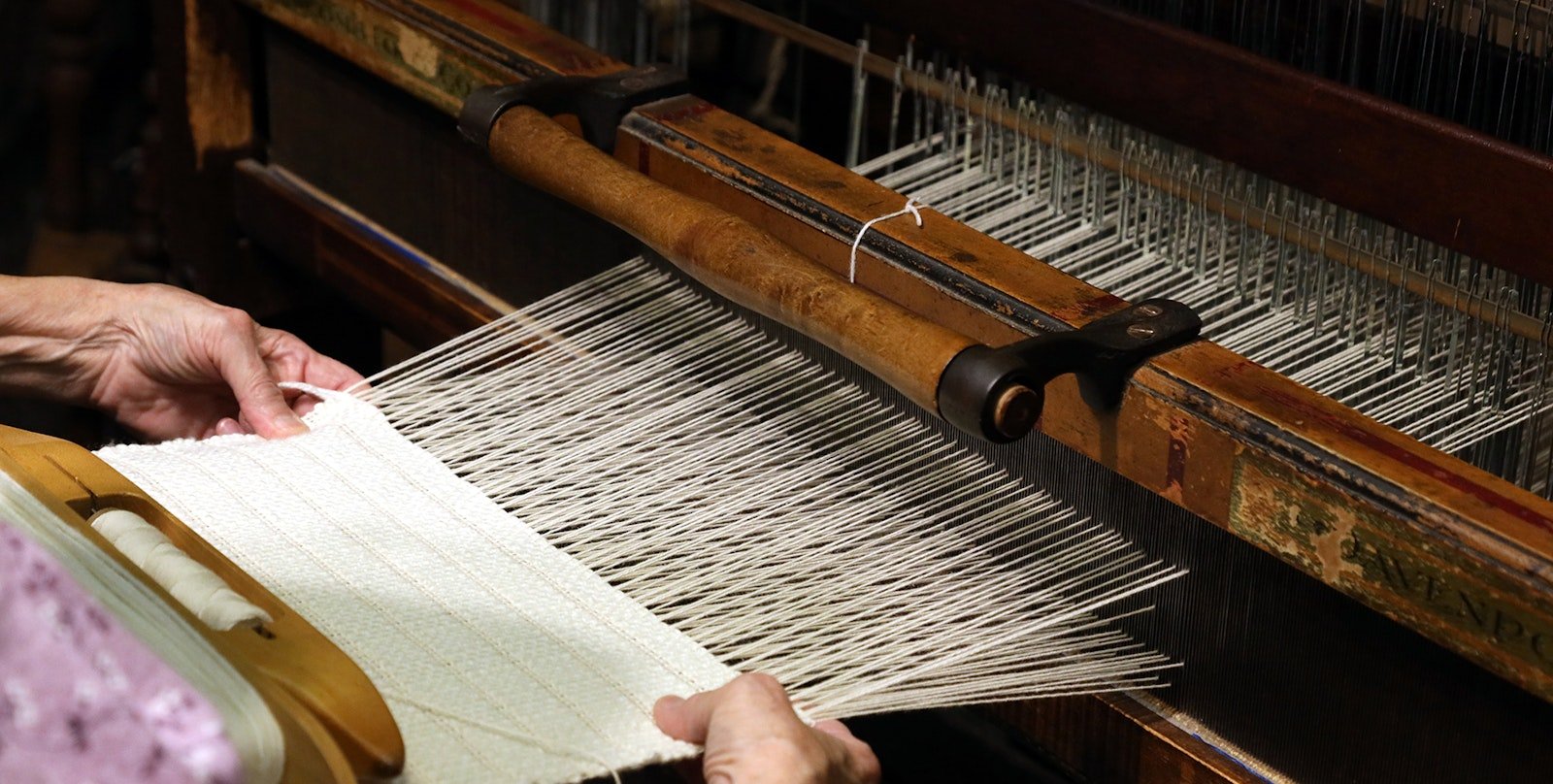One of my greatest talents is unweaving. You know, practice makes perfect and all that. I greeted my husband one night with the words “Guess what I did today? I unwove everything I wove yesterday!” His response: “Oh, so it must have been a good day.” I contend that if you love to weave, you must also like—or at least not hate—unweaving. Mistakes happen. Unweaving happens. I learned to weave from teachers, friends, and books such as Next Steps in Weaving and Learning to Weave, but I learned to unweave on my own.
My favorite is when I weave the wrong pick or picks, unweave, and then repeat the exact same error. You would think… right? If I make the same mistake more than once, it’s time to quit for the day.
Twill scarf without a tie-up error. Credit: Susan E. Horton
Errors are impossible to unsee, and they’ll haunt you. For example, I once wove a silk/wool twill scarf that looked great on the loom but when I took it off, I realized I had mis-tied a treadle, making the pattern slightly different on one side. I twisted the fringes thinking I would keep it. Truly, it was a mistake no one else would have noticed, yet even after washing and pressing the scarf, it bothered me. For me, the best course of action was to donate it to the local women’s prison. It went out of my life, and I hope it made someone else’s day.
I wish I had some wonderful tips for unweaving but I don’t. You know how it goes: somehow your shuttle doesn’t run on the shuttle race and ends up falling through the warp, or you forget to go around your floating selvedges and then have to back up and undo the undo. Basically my best advice is to take a deep breath, relax, and take your time. Unweaving is part of weaving and neither are notably speedy.
Sometimes, you need to choose between unweaving and surgical removal. For a few picks or pricey silk I’ll unweave, but when it comes to less expensive yarns or whole chunks, I use surgical removal. To do surgical removal, let off your tension slightly, use small sharp scissors to clip the weft ends close to the selvedge, and then use a blunt-nosed needle to pull the weft out. Then, really, try not to repeat the error.
There is one great bonus to learning to unweave: if you are demonstrating weaving to the public and start to run out of warp or weft, most people can’t tell if you are weaving or unweaving. And, you know, practice makes perfect.
Unweave well, Susan


